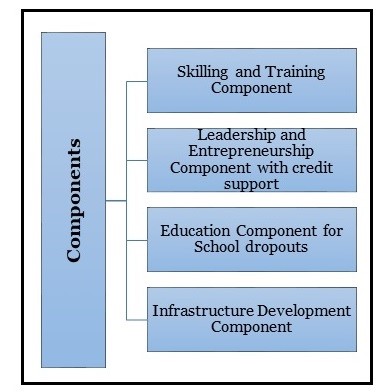As per Census 2011, around 19.3% of the population belongs to minorities.
Constitutional Safeguards for Linguistic Minorities
The term "minority" is not defined in the Indian Constitution. However, the Constitution recognises religious and linguistic minorities.
Scholarship Schemes
|
Scheme |
Description |
|
Pre- Matric Scholarship |
Availed for education in both private and government schools from class 9 and 10. |
|
Post-Matric Scholarship |
Provided to support the education of students studying in Class 11 to PhD. |
|
Merit cum Means Based Scholarship |
Targets professional & technical courses at UG & PG levels. |
|
Begum Hazrat Mahal National Scholarship |
Provided to recognize, promote and assist girl students belonging to national minorities who cannot continue their education due to lack of financial status. |

|
Component |
Earlier Schemes |
|
Traditional Training |
Hamari Dharohar and USTAAD |
|
Non- Traditional Skilling |
Seekho Aur Kamo |
|
Leadership and Entrepreneurship |
Nai Roshini |
|
Education |
Nai Manzil |
|
Infrastructure Development |
Implemented through Hub and Spoke Villages |
Seekho Aur Kamao scheme (Learn and Earn)
USTTAD scheme
Hamari Dharohar
Nai Roshini
Nai Manzil scheme
|
Beneficiary Specification |
|
|
% of seats |
Category under minority community |
|
30% |
Girl/Women |
|
5% |
Persons With Disability |
Pradhan Mantri Jan Vikas Karyakram (PMJVK)
National Minorities Development and Finance Corporation (NMDFC)
Haj Pilgrimage 2023
Naya Savera
Jiyo Parsi
|
Components |
About |
|
Medical |
Financial assistance is provided to Parsi Couples for medical treatment under standard medial protocol |
|
Health of Community |
Financial assistance is provided to Parsi Couples for child care and assistance of elderly people |
|
Advocacy |
Outreach programmes are conducted to generate awareness among the Parsi population |
Padho Pardesh
Nai Udaan
Maulana Azad National Academy for Skills (MANAS)
Cyber Gram
Garib Nawaz Employment Scheme
Prime Minister’s New 15 Point Program
National Commission for Minorities
The first statutory National Commission was set up in 1993.
National Commission for Religious and Linguistic Minorities
Sachar Committee
Durgah Khawaja Saheb Act, 1955
Central Waqf Council
References